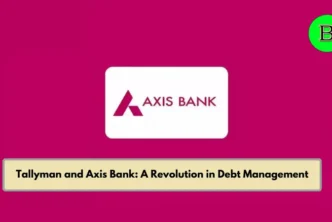Living in paradise is expensive, and if you’re feeling the pressure of debt that comes from living in the most expensive place in the world, you’re not alone. Fortunately, there are several types of debt consolidation that can help you reduce your debt and work towards becoming debt free.
Debt consolidation works by consolidating your debt from any number of sources (student loans, car loans, medical bills, credit card debt, etc.) And streamlining your bill payments so that you only need to pay once a month.
First, since you won’t have to juggle different due dates and payments, you’re less likely to be late paying.
Second, many loan consolidation options offer a lower interest rate than what you may be charged by your credit card company or other lenders, which should result in significant savings.
You can consolidate debt in a variety of ways, from taking out personal loans or home loans, and paying off a credit card. You can also work with a credit counseling agency to set up a debt management plan or hire a debt settlement company to negotiate a reduced payment.
Your credit score, income, and the type of loan you borrow will determine what loan consolidation options are available to you.
How to consolidate your loans in Hawaii
If you have debt, the following exercise will help you determine whether debt consolidation hawaii is the right choice for your financial situation. Even if you think it’s not enough, completing this exercise will help you become more organized and be better equipped to manage your debt.
Gather information about your credits
You may have a good idea of your credit score, but do you know the nitty-gritty data? To determine if debt consolidation will help you out of your situation, you need to gather information about your debt and your creditors. Create a spreadsheet and list the names of all creditors.
Now, go to my list of past invoices and bills from those creditors and enter in the spreadsheet the following information next to each creditor: (1) the type of debt you owe (student loans, credit card debt, other unsecured or secured debt, etc.), (2) the interest being charged, (3) your monthly payment, (4) your interest, and (5) whether you are current on the bill.
If this information is not available from the creditor’s statement, call the billing department and obtain the most up-to-date information available.
To make sure you haven’t forgotten any debt, you should also request a copy of your credit report. This document is available for free from the three credit reporting bureaus (Equifax, Experian, and Transunion), and it will show you what creditors have said about your credit history.
You’ll want to compare your reported credit history to the spreadsheet you created and make sure nothing fell through the cracks. And, for good measure, it’s also a good idea to buy your credit from the credit reporting bureaus or your credit card company.
Determine your monthly amount
On this step, you’ll need to collect your two maximum current paycheck stubs. Overview these paystubs and spot if the amount you acquired is constant along with your everyday pay. Pay close interest to such things as extra time, bonuses, commissions, ignored hours, or unusually big deductions.
If these paystubs don’t represent your income, then keep looking for a higher example. You may use this calculation to devise your finances, so you want to ensure which you do not increase the amount available to you each month. To that give up, don’t encompass abnormal or uncommon income.
For your pay stub, there is a line object known as “internet pay”, which represents the amount you received after your employer has taken taxes and deductions. Subsequent, use the subsequent pay frequency chart to calculate your net annual income.
- In case you are paid weekly, multiply your “net pay” through fifty-two;
- In case you are paid bi-weekly (every other week), multiply your “net pay” via 26;
- If you are paid two times a month (two times a month), multiply your “internet pay” via 24; under no circumstances
- In case you are paid month-to-month, multiply your “net pay” through 12.
- Now, divide your annual income by 12 to get your monthly income. This calculator will help you evaluate your budget and decide if debt consolidation honolulu makes sense.
Put together your budget
After you’ve calculated your debt and monthly income, the next step is to understand your spending and budget to make sure all your bases are covered.
For this exercise, you’ll want to add a new column to your spreadsheet and start entering your monthly bills.
First, list your fixed or “fixed” monthly expenses: this might include things like your rent or your mortgage, travel expenses, data plans, etc. Do you have room to lower those costs? If so, in the section next to that amount, enter what you think you can reduce the cost of each month.
Next, review a few months’ worth of credit card and bank statements and identify your variable expenses, such as groceries, utilities, gas, and entertainment. Then repeat the first exercise: are there any variable costs that you can reduce or eliminate? If so, enter your estimated amount in the row next to it.
You will also need to budget for expenses that only arise once or less a year. For example, car registration fees and oil changes, medical expenses, gifts, and professional expenses should be included.
Calculate how much you spend on these things over the course of a year, and divide by 12 to find out how much you need to set aside each month to cover these expenses. Finally, it’s also important to include a line item for an emergency fund so that if (and if) an unexpected expense occurs, you have a separate fund to cover it.





